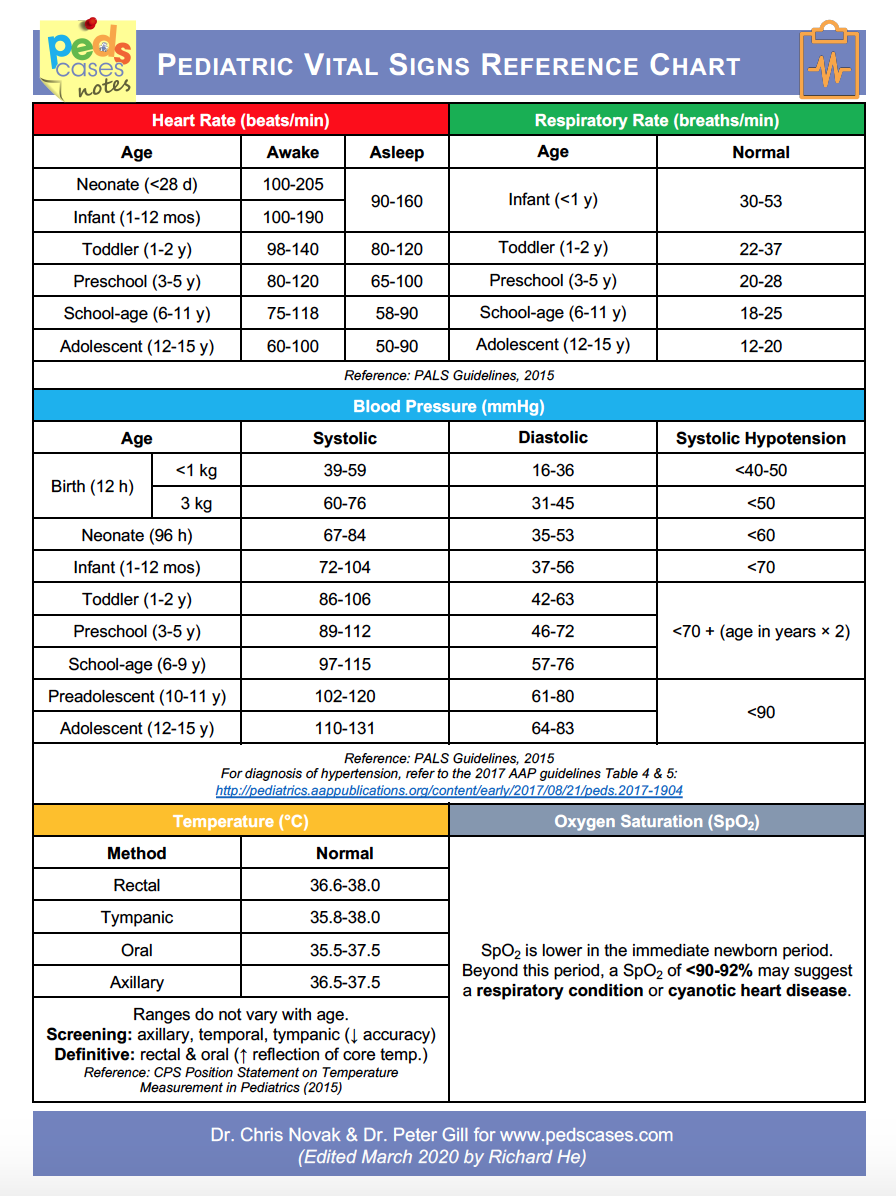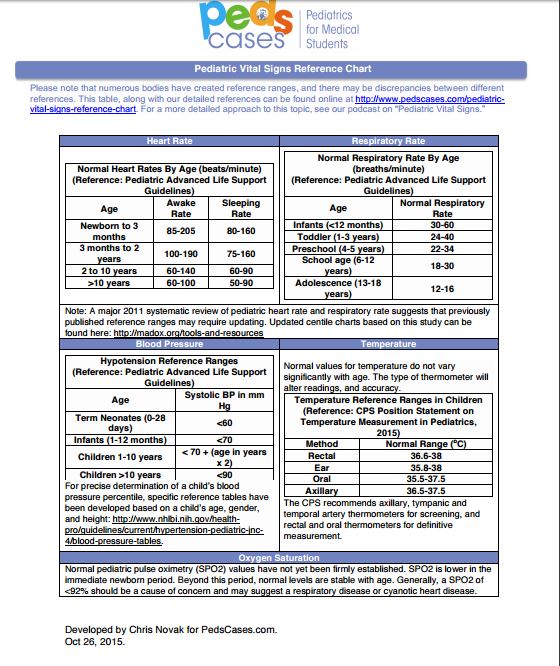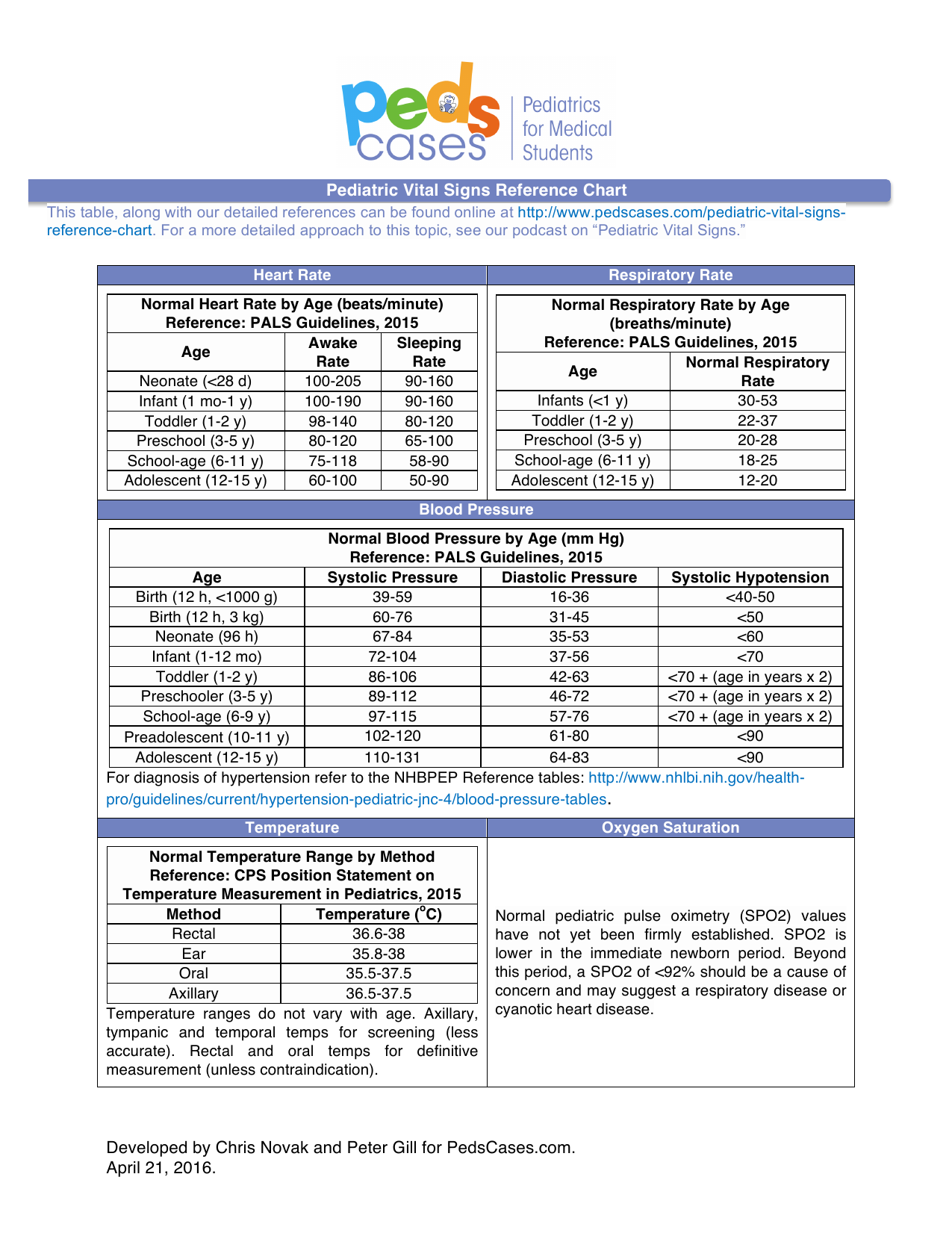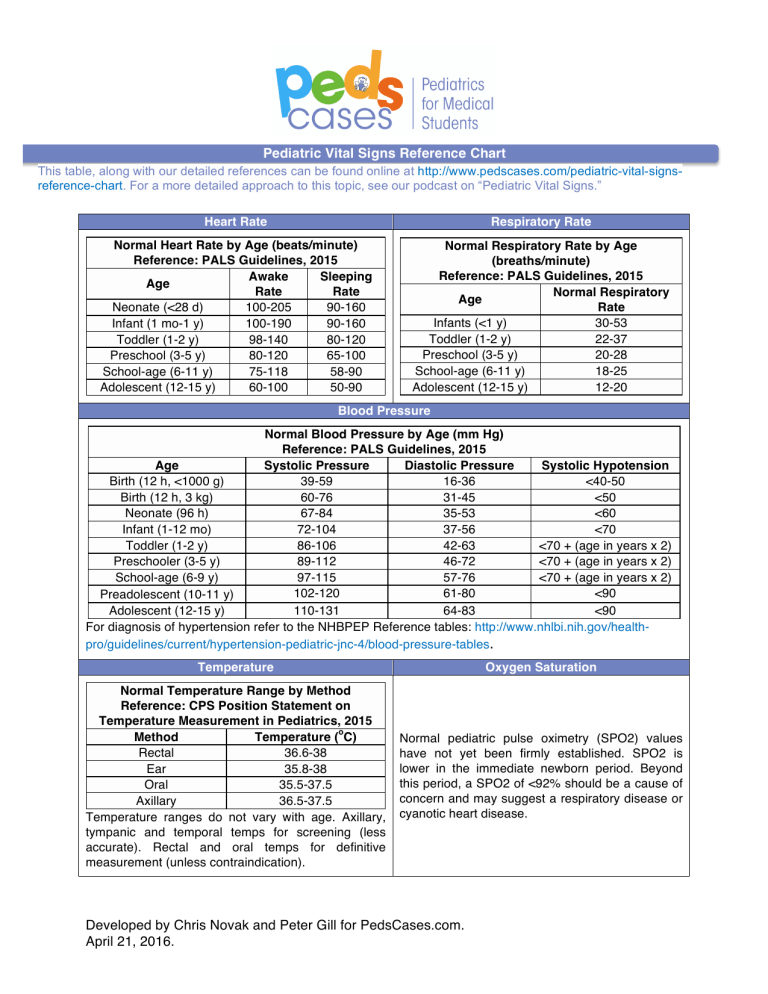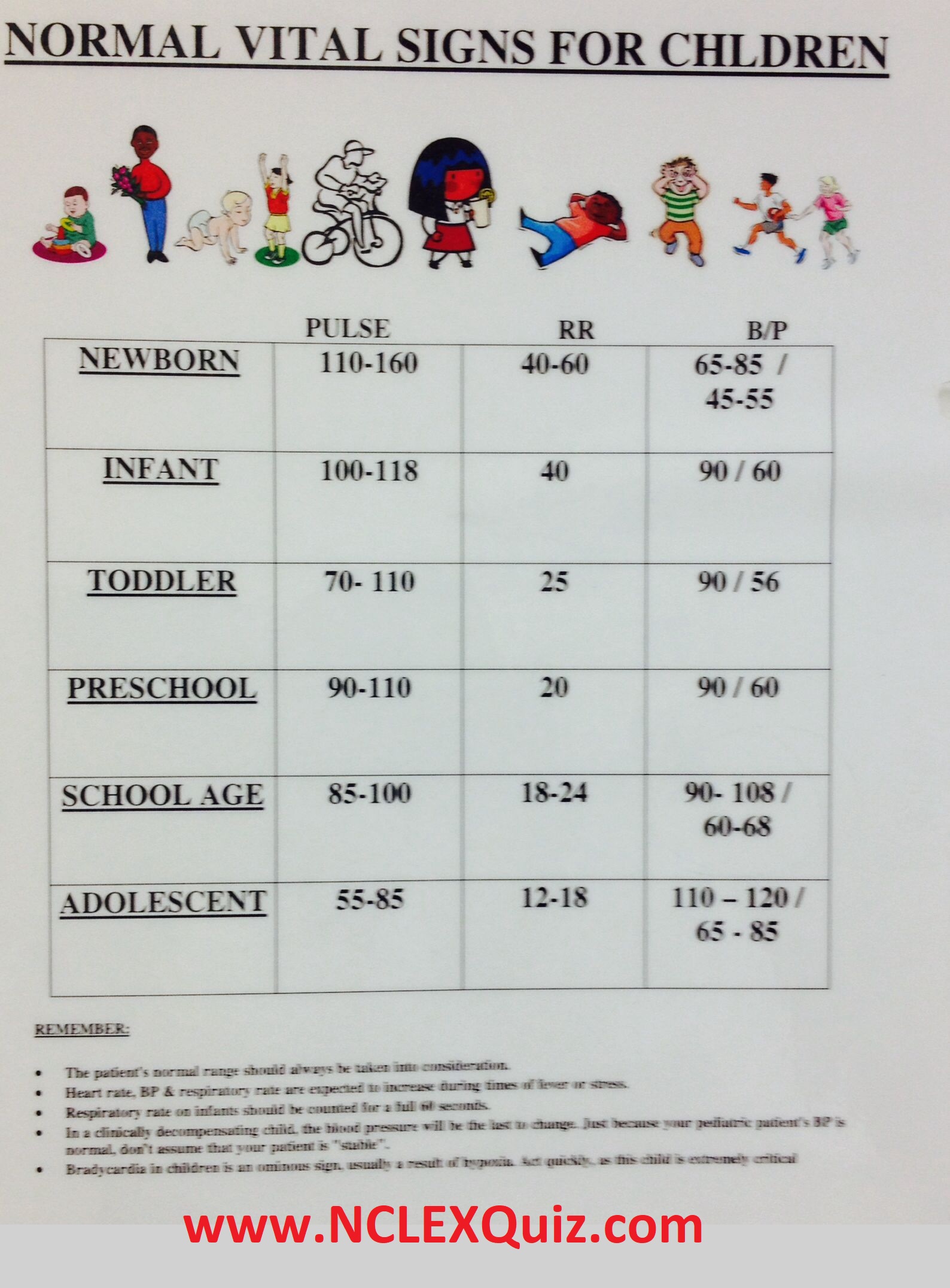Pediatric Vital Signs Chart
Vital signs do change as children age and grow and some conditions may cause dramatic changes over time.
Pediatric vital signs chart. For example two years ago my daughter had very low body temperatures often as low as 93F and occasionally as low as 90F. Christopher is a senior medical student at the University of Alberta. 100 to 160 beats per minute bpm 70 to 120 bpm.
Pediatric Vital Sign Normal Ranges Age Group Respiratory Rate. 20 to 30 bpm 6 to 11 years. 12 to 18 bpm footnote 1.
Preschooler 3-5 yrs 20 - 30. Chris Novak a pediatric resident at the University of. The Medical Institute of Kentucky.
Pediatric Vital Signs Reference Chart. This PedsCases Note provides a one-page infographic on Pediatric Vital Signs and covers the age-based variation in normal ranges for vital signs throughout the pediatric population. 12 to 20 bpm.
The most common vital signs recorded on each chart include heart rate respiratory rate blood pressure oxygen saturation and body temperature. Pediatric Vital Signs Reference Chart. Pediatric Vital Signs Reference Chart.
Pediatric Vital Signs Chart. A pediatric vital signs chart includes important data for assessing a childs health and development. Use the table above to determine the pediatric vital signs that relate to the infant or child that you are dealing with.
10 rows Pediatric Vital Signs Reference Chart This table along with our detailed references can be. 60 to 100 bpm. This PedsCases Note provides a one-page infographic on Pediatric Vital Signs and covers the age-based variation in normal ranges for vital signs throughout the pediatric population.
The below given vital signs chart lists you with the normal vital signs value. The pediatric vital signs chart categorizes vitals based on age. It is important for EMTs to have a basic understanding of appropriate vitals for newborns infants and children.
1 to 5 years. 24 to 30 bpm. 17 rows Heart Rate beatsmin Respiratory Rate breathsmin AgeAwake Asleep Normal Neonate.
It was created by Dr. 100 to 160 beats per minute bpm 70 to 120 bpm. Single blood pressure chart for children up to 13 years to improve the recognition of hypertension based on existing normative data Arch Dis Child.
24 to 30 bpm. 1 to 5 years. 30 to 60 breaths per minute bpm 6 to 12 months.
The vital sign is a sign referring to the status of the vital functioning of the body. Over the past year as she has struggled with. Control of blood pressure appetite and glucose by leptin in mice lacking leptin.
So if your child. Chris Novak a pediatric resident at the University of. 60 to 100 bpm.
0 to 12 months. This podcast was written by Christopher Novak Dr. What Is a Pediatric Vital Signs Chart.
Infant 1-12 months 20 - 30. 1 to 11 years. But children are not small adults and normal vital.
Respiration breaths 0 to 6 months. Age Birth 12 hrs. Vital signs is to detect when a change from your childs normal occurs.
It was created by Dr. However I dont recommend memorizing the entire pediatric vital signs chart unless you have an exceptional memory. For a more detailed approach to this topic see our podcast on Pediatric Vital Signs.
30 to 60 breaths per minute bpm 6 to 12 months. Blood pressure pulse rate respiratory rate and temperature are the routine vital signs measured in medicine. These vital signs remain relatively constant throughout adult life.
Peter Gill and Dr. Respiration breaths 0 to 6 months. 20 to 30 bpm 6 to 11 years.
A childs vital signs change with age and differ from the normal ranges for adults. 12 to 18 bpm footnote 1. Normal ranges for vital signs.
Toddler 1-3 yrs 20 - 30. This episode presents an approach to pediatric vital signs. Factors such as whether they are awake.
0 to 12 months. 12 to 20 bpm. 1 to 11 years.
Normal ranges for vital signs. The most important vital signs are body temperature systolic blood pressure pulse rate and breathing rate.
